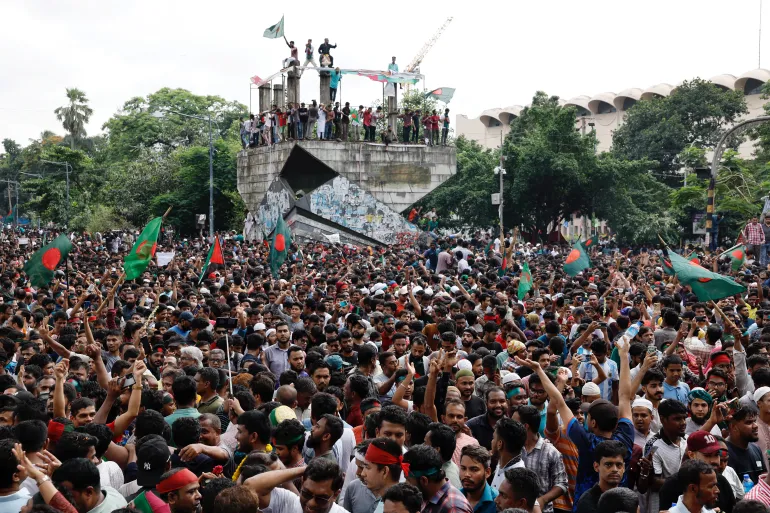Trump’s Tehran ‘evacuation’ warning ‘extremely troubling’
Table of Contents
As the Israel-Iran conflict escalates in June 2025, President Donald Trump faces a complex decision matrix shaped by Israeli Prime Minister Benjamin Netanyahu’s military push, domestic political pressures from his MAGA base, and his ambition to broker a nuclear deal with Iran. Trump’s public stance has oscillated between endorsing Israel’s strikes and distancing the U.S. from them, reflecting his strategic ambiguity—often described as the “madman theory” of unpredictable escalation to coerce adversaries. With Iran’s nuclear program at the forefront, Trump’s options range from escalating military involvement to pursuing diplomacy or pulling back entirely. This blog analyzes the factors influencing Trump’s approach, his three primary options, and their potential implications, drawing on recent developments from the G7 Summit and beyond.
Factors Weighing on Trump’s Decision
- Netanyahu’s Pressure and Israeli Objectives: Netanyahu claims Israel’s strikes, launched on June 13, 2025, as part of “Operation Rising Lion,” were “fully coordinated” with the U.S., aiming to cripple Iran’s nuclear and missile programs. Israel seeks U.S. support, particularly access to bunker-buster bombs to target Iran’s fortified Fordow enrichment site, which Israel’s arsenal cannot fully destroy. Netanyahu’s push for regime change, including targeting Supreme Leader Ayatollah Ali Khamenei, adds tension, as Trump vetoed such a plan, citing no American casualties.
- MAGA Isolationism and America First Policy: Key MAGA figures like Tucker Carlson and Representative Marjorie Taylor Greene oppose U.S. involvement, arguing it betrays Trump’s “America First” promise. Carlson’s call to “drop Israel” and Greene’s warning that a full-scale war could “end Trump’s presidency” reflect growing isolationist sentiment among his base, amplified by fears of U.S. casualties at regional bases.
- Diplomatic Ambitions: Trump prioritizes a nuclear deal with Iran, viewing it as a legacy-defining achievement and a path to a Nobel Peace Prize. His envoy, Steve Witkoff, was set for a sixth round of talks in Oman on June 15, 2025, before Israel’s strikes derailed negotiations. Trump’s dealmaking rhetoric contrasts with Netanyahu’s military approach, creating friction.
- Regional Risks and U.S. Military Exposure: U.S. naval destroyers and missile defenses are aiding Israel, exposing American forces to Iranian retaliation. Iran has threatened U.S. bases if Washington supports Israel’s defense, a scenario that could escalate rapidly if American lives are lost. Modeling suggests U.S. involvement is likely if Iran attacks American assets.
- Domestic and Congressional Dynamics: While most Congressional Republicans back Israel’s arms supplies and strikes, hawkish voices like Senator Lindsey Graham push for regime change in Iran, urging Trump to “go all in” if diplomacy fails. This contrasts with MAGA’s anti-war faction, creating a political tightrope for Trump.
- Global Context at the G7 Summit: The G7 Summit in Kananaskis, Alberta (June 16–17, 2025), was dominated by the Israel-Iran crisis, with leaders like UK PM Keir Starmer and French President Emmanuel Macron urging de-escalation. Trump’s early departure on June 16 and refusal to sign a G7 de-escalation statement underscored his divergence from allies, complicating multilateral efforts.
Trump’s Three Options for Dealing with Iran
1. Bowing to Netanyahu’s Pressure and Escalating
Trump could align with Israel’s military approach, providing bunker-buster bombs or direct U.S. involvement to target Iran’s nuclear facilities, particularly Fordow. This option, backed by hawkish Republicans and Netanyahu, aims to force Iran into negotiations from a weakened position or achieve regime change.
- Pros:
- Signals strength to Iran and bolsters Trump’s image as a decisive leader, appealing to pro-Israel Republicans.
- Could set back Iran’s nuclear program significantly, aligning with Trump’s and Netanyahu’s shared goal of preventing a nuclear-armed Iran.
- Strengthens U.S.-Israel ties, critical amid Netanyahu’s claims of coordination.
- Cons:
- Risks U.S. casualties, alienating MAGA supporters like Carlson and Greene, who warn of political fallout.
- Could derail Trump’s nuclear deal ambitions, as Iran abandoned talks post-strikes.
- Escalation may provoke Iranian attacks on U.S. bases, drawing America into a broader war.
- Contradicts Trump’s campaign promise to end foreign wars, potentially damaging his 2026 midterm prospects.
- Likelihood: Moderate. Trump’s veto of the Khamenei assassination plan and his dealmaking focus suggest reluctance for full escalation, but Netanyahu’s pressure and hawkish advisors could sway him if Iran retaliates aggressively.
2. Holding the Course (Middle Ground)
Trump could maintain the current U.S. posture: supporting Israel’s defense with missile systems and naval assets while avoiding direct offensive involvement. This approach balances caution with alliance obligations, allowing Trump to monitor the conflict’s trajectory.
- Pros:
- Minimizes immediate risk of U.S. casualties, preserving MAGA support and avoiding domestic backlash.
- Keeps diplomatic channels open, as Trump continues to urge Iran to negotiate.
- Maintains U.S.-Israel coordination without committing to regime change or ground involvement, aligning with Trump’s restraint on Khamenei’s targeting.
- Allows Trump to gauge Iran’s response and Israel’s success, preserving flexibility.
- Cons:
- Risks appearing indecisive, undermining Trump’s “madman theory” and dealmaking credibility if Iran refuses talks.
- Continued U.S. defensive support exposes forces to Iranian retaliation, as Tehran has threatened U.S. bases.
- Fails to satisfy hawkish Republicans or Netanyahu, who may push for deeper U.S. involvement.
- May prolong the conflict, complicating G7 allies’ de-escalation efforts.
- Likelihood: High. Trump’s current stance—reiterating no direct U.S. involvement while aiding Israel’s defense—reflects this middle ground, supported by his National Security Council’s caution and his early G7 exit to focus on the crisis.
3. Listening to MAGA Voices and Pulling Back
Trump could heed MAGA isolationists like Carlson and Greene, urging Israel to de-escalate and distancing the U.S. from the conflict. This aligns with his “America First” policy, emphasizing diplomacy over military entanglement.
- Pros:
- Aligns with MAGA’s anti-war sentiment, preserving domestic support and avoiding a politically costly war.
- Reduces risk to U.S. bases and personnel, mitigating Iran’s threats of retaliation.
- Reinforces Trump’s dealmaking narrative, as he pushes for a nuclear agreement, citing his claimed India-Pakistan ceasefire success (disputed by India).
- Aligns with G7 allies’ calls for de-escalation, potentially earning diplomatic goodwill.
- Cons:
- Risks straining U.S.-Israel relations, as Netanyahu expects support and claims coordination.
- Could embolden Iran if perceived as U.S. weakness, undermining Trump’s “maximum pressure” strategy.
- May alienate pro-Israel Republicans, creating Congressional friction ahead of midterms.
- Unlikely to halt Israel’s offensive, as Netanyahu dismissed ceasefire calls and aims for regime change.
- Likelihood: Low to moderate. Trump’s social media posts on June 15–16, 2025, calling for a deal and aligning with Russia’s ceasefire stance suggest responsiveness to MAGA, but his ongoing defensive support for Israel limits a full pullback.
Analysis of Trump’s Approach: Madman Theory and Maximum Pressure
Trump’s unpredictability, oscillating between threats of “brutal” attacks and calls for a deal, aligns with the “madman theory,” where ambiguity coerces adversaries into compliance. His “maximum pressure” strategy—combining sanctions, military posturing, and diplomatic overtures—echoes his first term’s approach, which reduced Iran’s oil exports but failed to secure a deal. However, Iran’s 2015 JCPOA signing under Obama suggests it is open to negotiations, undermining claims by Trump’s hawkish advisors that Tehran is insincere.
The theory’s effectiveness is questionable. Iran’s Foreign Minister Abbas Araghchi accused Netanyahu of sabotaging talks to mislead Trump, indicating Tehran’s frustration but willingness to negotiate if Israel halts strikes. Trump’s veto of the Khamenei assassination plan shows restraint, but his support for Israel’s defense risks entanglement, undermining his dealmaking narrative. The abandoned Oman talks highlight the diplomatic cost of escalation, challenging Trump’s claim that strikes could “help” a deal.
Risks and Implications
- Military Escalation: Providing bunker-busters or direct involvement could destroy Fordow but risks a regional war, with Iran targeting U.S. bases in Iraq, Syria, or the Gulf. The death toll—hundreds in Iran, 24 in Israel—could spike, fueling MAGA backlash.
- Diplomatic Fallout: A collapsed nuclear deal strengthens Iran’s ties with Russia and China, who condemned Israel’s strikes, and weakens U.S. leverage in G7 and UN forums.
- Domestic Politics: MAGA’s isolationism, amplified by Carlson’s 20 million X followers and Greene’s vocal posts, could erode Trump’s base if American casualties mount. Conversely, alienating pro-Israel Republicans risks legislative gridlock.
- Iran’s Response: Iran’s execution of an alleged Mossad spy and its “proportionate” drone strikes signal defiance but not all-out war. Tehran’s nuclear threshold status—enough fuel for 10 bombs—raises the stakes, but IAEA reports suggest no weaponization.
Critical Perspective
The establishment narrative, reflected in sources like Reuters and NBC, portrays Trump as balancing diplomacy and pressure, but this overlooks inconsistencies. Trump’s claim of no U.S. involvement contradicts Netanyahu’s coordination assertion and Axios reports of a U.S. “green light.” His intelligence director’s testimony that Iran’s nuclear program was inactive undercuts justifications for strikes, suggesting political motives may drive escalation. MAGA’s anti-war stance, while principled, ignores Iran’s regional influence via proxies like the Houthis, which Trump’s own strikes targeted. The “madman theory” may intimidate but risks miscalculation, as Iran’s retaliatory strikes on Israel show.
What’s Next?
Trump’s immediate challenge is responding to Iran’s ongoing missile and drone attacks, reported on June 17, 2025, which breached U.S.-Israeli defenses. His National Security Council is convened in the Situation Room, indicating a potential shift. If Iran targets U.S. assets, pressure for escalation will mount, but MAGA’s warnings may push Trump toward a ceasefire call, possibly via a public appeal to Netanyahu. Restarting talks in Oman remains possible if Israel pauses strikes, as Araghchi suggested a single Trump call could halt Netanyahu.
Long-term, Trump’s success hinges on reconciling his dealmaking ambition with Israel’s military goals and MAGA’s isolationism. A nuclear deal, even a limited one allowing monitored enrichment, could stabilize the region and satisfy Gulf allies like Saudi Arabia, who favor diplomacy. However, Netanyahu’s rejection of ceasefires and Iran’s nuclear threshold status make this elusive. Trump’s G7 exit and refusal to sign a de-escalation statement suggest he prioritizes unilateral action, but domestic and regional risks may force a recalibration.
Trump’s options—escalating with Israel, holding the course, or pulling back—reflect a delicate balance between his dealmaking aspirations, Netanyahu’s pressure, and MAGA’s anti-war fervor. Holding the course is most likely, as it preserves flexibility while Trump monitors Iran’s response and Israel’s progress. However, the risk of U.S. entanglement grows with each Iranian strike, and MAGA’s vocal opposition could tip the scales toward de-escalation if American lives are lost. Trump’s “madman theory” and “maximum pressure” tactics aim to coerce Iran, but their success depends on Tehran’s willingness to negotiate amid Israeli bombardment—a prospect dimmed by the abandoned Oman talks. As the conflict dominates global discourse, Trump’s choices will shape his presidency, U.S.-Israel relations, and the Middle East’s future.
Disclaimer: This blog is based on publicly available information from news reports, official statements, and social media posts about the Israel-Iran conflict and Trump’s policies as of June 17, 2025. The content has been rephrased for clarity and engagement while preserving the essence of the original details. Developments regarding Trump’s decisions and the conflict’s trajectory are subject to change.
Source: Information derived from news reports by BBC, Reuters, NBC News, PBS News, Newsweek, TIME, AP News, The New York Times, and posts on X.




